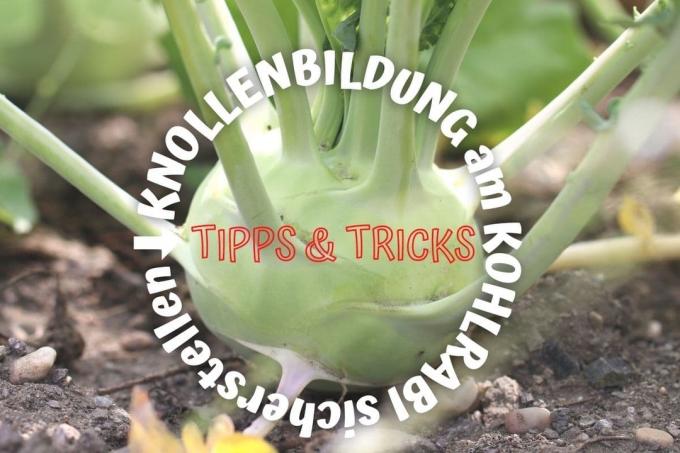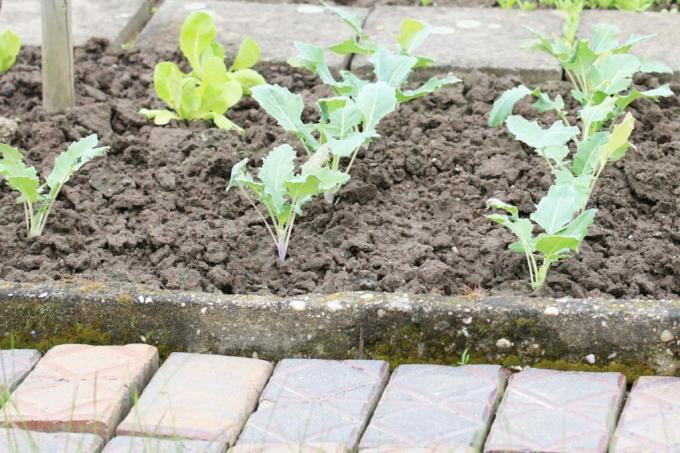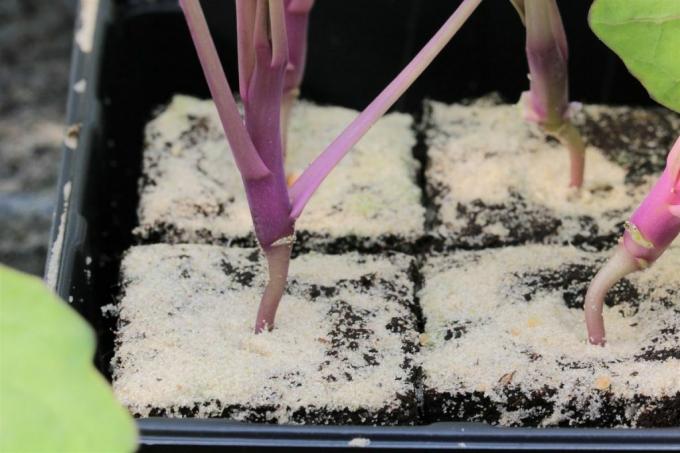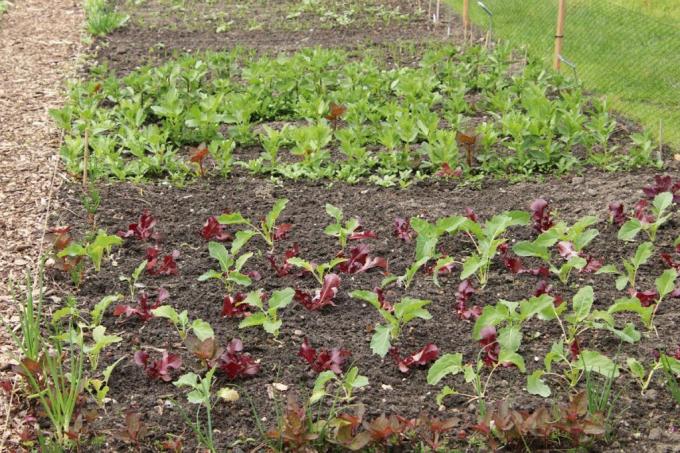
table of contents
- Why is it?
- Note planting depth and spacing
- Avoid nitrogen-based fertilization
- Protection from heartlessness
- Protect from cabbage hernia
- Use good quality plants
- frequently asked Questions
The kohlrabi is a popular type of cabbage and is therefore grown in many gardens. The tastiest part is the tuber. But what if none develops? Here's what to do if kohlrabi doesn't form a tuber.
In a nutshell
- The tuber is the edible part of kohlrabi
- grows above the earth and arises from primary growth in the thickness of the stem axis
- The size, color and shape of the tuber vary depending on the variety
- The most effective help against the absence of lump formation is to identify and prevent the causes
- Avoid care mistakes, increase resilience, protect against diseases
Why is it?
If the kohlrabi does not form a tuber, there can be different causes. In most cases, planting and care errors are responsible for this. It is possible that the kohlrabi has been planted too deeply or that no distances have been maintained between the plants. Other causes can be too nitrogen-based fertilization or temperatures that are too cool. In addition, failure to observe the crop rotation and an associated clubhead can die Prevent the formation of lumps, as well as the so-called heartlessness or the purchase of inferior ones Plants.
Tip: Incidentally, the leaves of kohlrabi are also edible; they contain far more healthy ingredients than the tuber.
Note planting depth and spacing
Plants that do not develop tubers can actually only be disposed of. In order not to have this problem with new plants, causes such as planting too deeply must be avoided. It is best to plant them as deep as they were in the pot before, about two to four centimeters deep. The distances between the plants are at least as important. About 30 cm is recommended here.

Tip: If the planting is too dense, if the young plants may not have been singled out, the kohlrabi plants will not be able to develop tubers because there is simply not enough space.
Avoid nitrogen-based fertilization
Also a wrong or Fertilizing that is too nitrogen-based can lead to problems with the formation of tubers and completely or partially prevent them.
- too much nitrogen makes plants shoot into the weed
- Tubers are not or only partially formed
- A need-based fertilization promises help
- Liquid fertilizers or organic fertilizers are suitable
- Commercial liquid fertilizers have a short-term effect
- therefore administer once a week
- organic fertilizers have a long-term effect
- Only fertilize it once during the entire cultivation period
- ideally at the beginning of the cultivation directly at the planting
Tip: A lack of nutrients or water can also cause the kohlrabi plants to begin to bloom and not develop tubers. Therefore, they should be watered regularly throughout the entire culture.
Protection from heartlessness
Cold plays a role in that it affects the Cultivation of young plants respectively. the cultivation of which can lead not only to cracking and bursting, but also to the fact that kohlrabi does not form a tuber.

- Temperatures below twelve degrees are problematic
- The result can be so-called heartlessness
- occurs mainly in spring
- if the cultivation is too cold and if the cultivars are sensitive
- Vegetation point stops growing early
- Plant no longer forms new leaves
- shoot up or into the herb
- Tubers are not formed
- Remedy only through preventive measures
- Kohlrabi plants need warmth
- Pay attention to germination temperatures of 18-20 degrees
- 12-14 degrees after germination is recommended
Protect from cabbage hernia
The cabbage hernia is a so-called crop rotation disease. This, too, can prevent the kohlrabi from forming a tuber. It is caused by a parasite that can persist in the soil for several years and attack the roots of cruciferous vegetables, which include kohlrabi. One of the most important measures to protect against these pathogens is observing and maintaining the crop rotation. This means that kohlrabi can be bought in the same location or at the same location every four, better every seven years at the earliest. should grow where other cruciferous vegetables were grown.

Use good quality plants
If the kohlrabi does not develop tubers, it may also be due to inferior plant material. Kohlrabi plants that are on sale in the spring are often planted in groups in small pots. Sometimes they stand cramped in these planters for several weeks. As a result, they cannot develop and only shoot up. At some point they are overdue, i. H. they are actually fully developed in terms of age and have practically skipped the stage of tuber formation.
Tip: When buying kohlrabi plants, you should also make sure that the root ball is firm, the leaves are healthy and lush green and that small nodules are already visible. It is best to buy them from a gardener or in garden centers, where the quality is usually better.
frequently asked Questions
Depending on the time of planting, early varieties can be harvested from April / May and late into October / November. It can take six to twelve weeks from sowing to harvesting the first tubers.
A preculture is possible from mid-February? Before you finally plant them out around the middle of April, you should harden them for about ten days by putting them outside during the day and bringing them back in in the evening. Or you can cover it with fleece overnight.
If the kohlrabi is left in the ground until the leaves wither, it can usually only be used for boiling. Even if the tubers are already woody, they are usually inedible.
In fact, some plants can be conducive to tuber formation or the growth provided the kohlrabi plants themselves are of good quality. Good neighbors are, for example, radishes, French beans or marigolds and Tagetes. The latter are known for their pest repellent properties.



